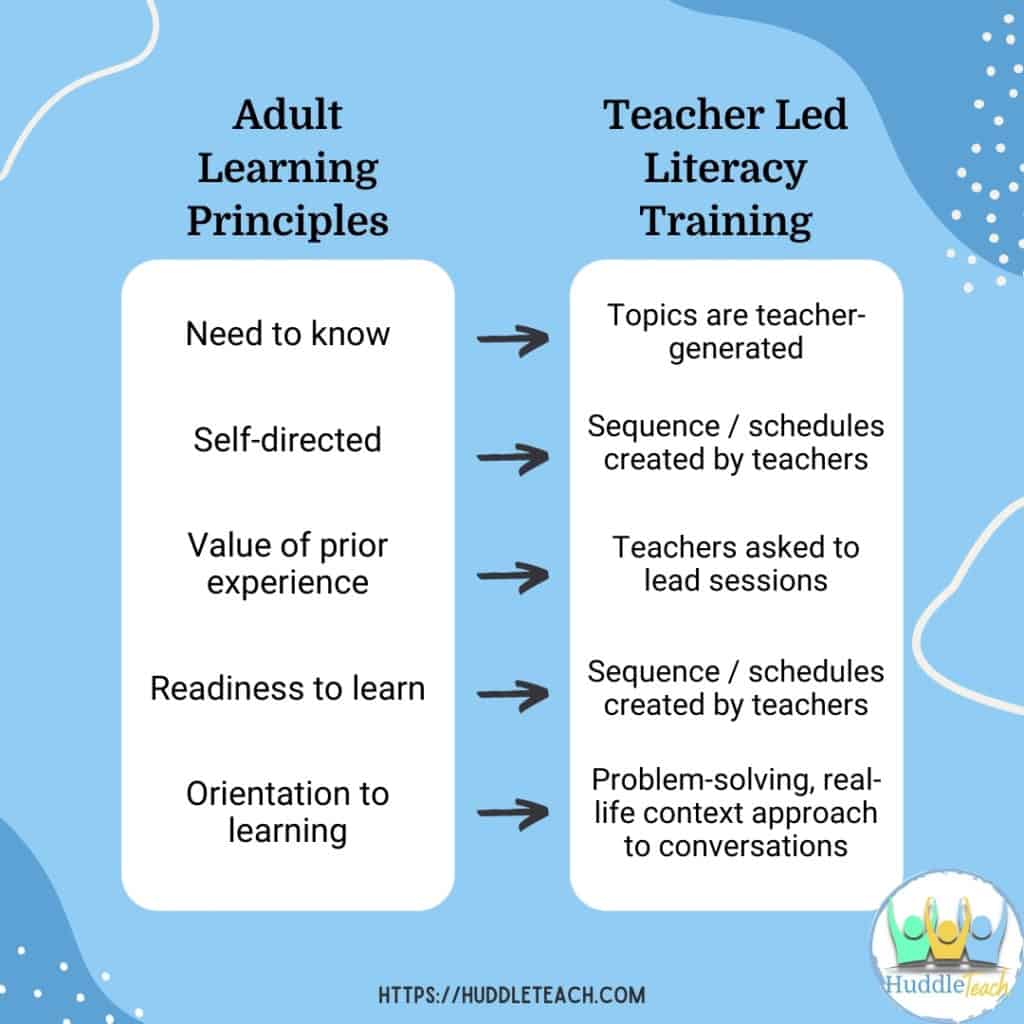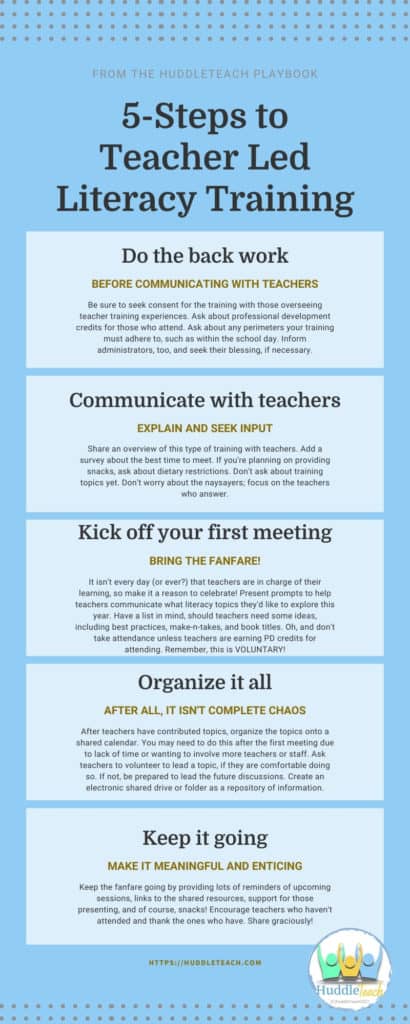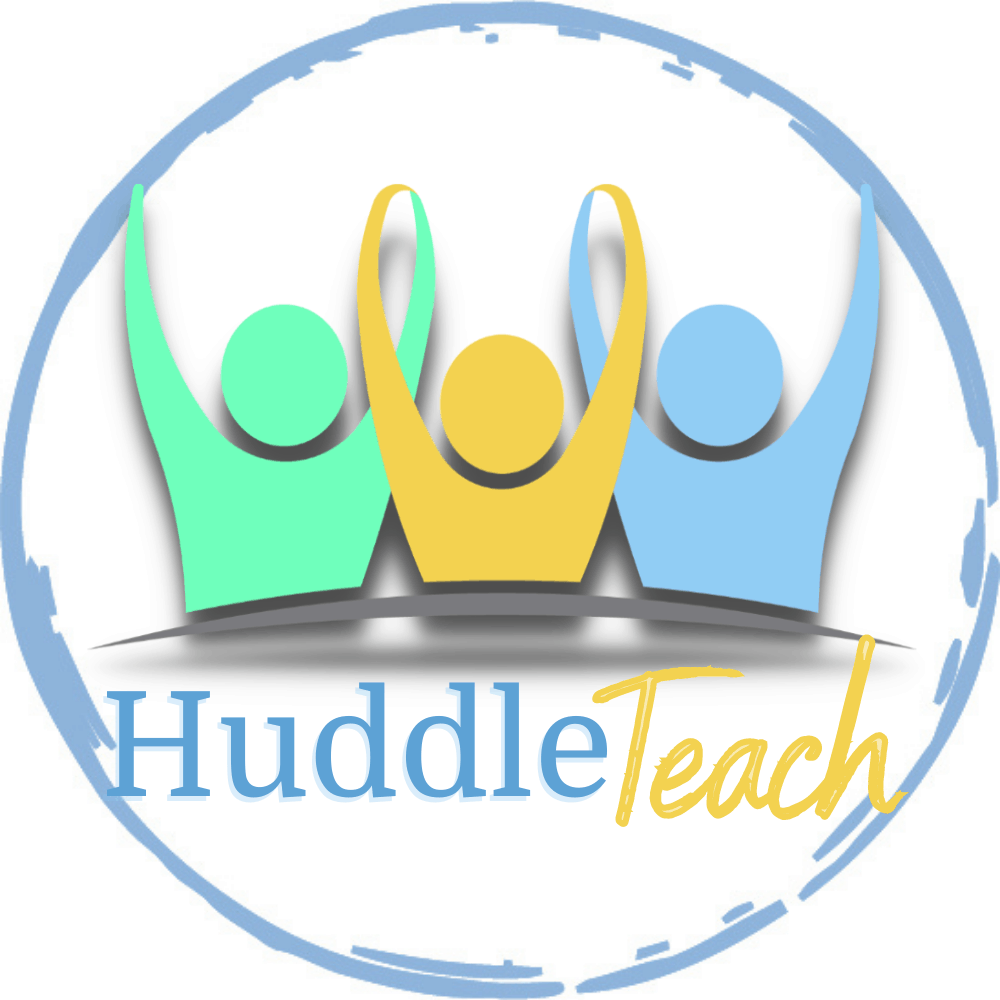Bringing EdCamp structures to literacy coaching

Basics of EdCamp
You may have heard of or attended EdCamp, an “unconference” structure that began in 2009. EdCamps are free events organized by educators, for educators, and their success relies on the participation of all attendees. In short, everyone arrives at a pre-secured location at a set time. From there, it’s all hands on deck! Participants communicate the topics they’d like to learn about – often technology, but really anything – and the ideas are grouped together. A schedule is developed and topics are assigned to times.
If you have mastery of a skill or knowledge related to a topic on the board, you just might become the presenter! Don’t worry, though. Most of the “training sessions” are conversations, demonstrations, or question/answer formats. The day ends with some type of review – maybe a 30-second sharing time or shared written notes from sessions. Resources from the day are usually available on a shared drive, too. (If you would like to learn more about EdCamp, this article is for you!)
When it hit me
The feeling of EdCamp stayed with me long after the training day, and I continued to ruminate on its success. We know our training participants thrive when they are given autonomy, when the topics match their needs, when they have control over many factors related to training, and when their experience and knowledge are valued. As teachers, we typically have internal motivation to learn; we just need the right context to do so! In fact, EdCamp is so successful because the structure itself aligns with the principles for effective adult training:

As a literacy coach, I was proud of the content I offered teachers. I was even excited when they participated in optional training. But I had to face it: “optional” training is often not, and many times, teachers had trouble fully engaging in professional development activities. I had a habit of asking what I could do to help, what topics they’d like to learn. But I wanted to take training to a completely new level. This training structure would offer the autonomy and voice my teachers desperately needed.
I wanted my teachers to feel what I felt after my first EdCamp – invigorated, positive, and empowered! I wanted them to be as excited about literacy learning as I had become about classroom technology that day!
That’s when the idea for a teacher led literacy training was born!
The first step
The first thing I did was speak with my principal. I created a handout for him explaining the structure and my purpose (growing our teachers’ understanding of literacy topics) and my plan (truly optional training experiences). We had a conversation that went something like this:
Him: So you want to have trainings in which teachers are not required to attend?
Me: That’s right.
Him: The teachers get to choose the topics?
Me: Yes. They know what knowledge they need to have to move their students forward in literacy.
Him: And as the literacy coach, you’re going to host these trainings? When will they happen?
Me: Yes, I am. But sometimes teachers may want to present, especially if they have experience and knowledge in an area. But I’ll let teachers decide what and when works best for them. I’ll certainly provide information, best practices, etc. when needed. I can even preview what they would like to share, if you like.
Him: Well, I don’t think it will work, but I’ll approve it. Good luck!
And the rest, as they say, is history!
I spent a short amount of time researching EdCamp set up, then I adapted that process to our school setting:
5 Steps to Creating a Teacher Led Literacy Training

That’s it! That’s all there is to facilitating training in which teachers are invested!
The Way It Worked for Us
Much to my principal’s surprise, this type of training worked beautifully! Our team chose Friday mornings twice a month from 8:05-8:30. We called it Breakfast Club, and of course there were snacks! We created a calendar and penciled in the dates. I sent lots of reminders and included the topics for upcoming sessions, always asking teachers to contribute knowledge, resources, and ideas – before, during, and after training. As always, a few dates were modified as the year progressed, but that was easy to do. No matter when, we always had a committed group. Some teachers found presenting a bit daunting, but after a very successful make-n-take session, they were much more open with each other.
Every year since that first Breakfast Club – even in different districts – I have found my way back to teacher led literacy training. More often than not, it is on a Friday morning, and it’s called the Breakfast Club.
I hope you will continue to join us in this learning community! Enter your name and email below to receive weekly resources, ideas, and freebies! Hope to see you soon!

